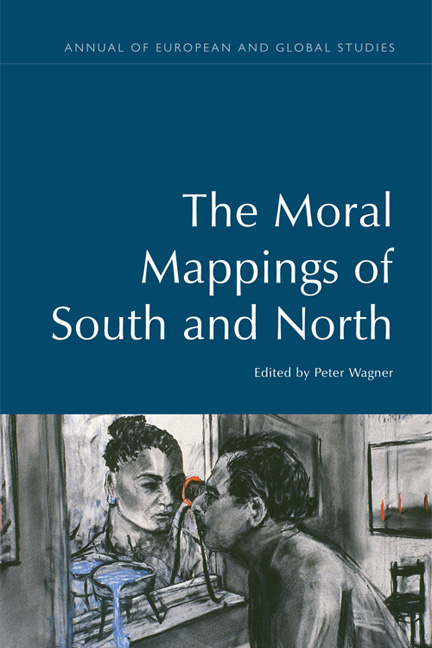Book contents
- Frontmatter
- Contents
- List of Figures
- Notes on the Contributors
- Acknowledgements
- 1 Finding One's Way in Global Social Space
- 2 Does the World Have a Spatio-political Form? Preliminaries
- 3 The BRICS Countries: Time and Space in Moral Narratives of Development
- 4 Russia between East, West and North: Comments on the History of Moral Mapping
- 5 Digging for Class: Thoughts on the Writing of a Global History of Social Distinction
- 6 North–South and the Question of Recognition: A Constellation Saturated with Tensions
- 7 On Spaces and Experiences: Modern Displacements, Interpretations and Universal Claims
- 8 The South as Exile
- Index
5 - Digging for Class: Thoughts on the Writing of a Global History of Social Distinction
- Frontmatter
- Contents
- List of Figures
- Notes on the Contributors
- Acknowledgements
- 1 Finding One's Way in Global Social Space
- 2 Does the World Have a Spatio-political Form? Preliminaries
- 3 The BRICS Countries: Time and Space in Moral Narratives of Development
- 4 Russia between East, West and North: Comments on the History of Moral Mapping
- 5 Digging for Class: Thoughts on the Writing of a Global History of Social Distinction
- 6 North–South and the Question of Recognition: A Constellation Saturated with Tensions
- 7 On Spaces and Experiences: Modern Displacements, Interpretations and Universal Claims
- 8 The South as Exile
- Index
Summary
IN FEBRUARY 1930, Leo Frobenius, the German archaeologist and ethnologist, announced to the world that he had identified the ‘source of the civilization which created Zimbabwe and many hundreds of ruins’ (‘The Zimbabwe Riddley’, Cape Times, 1 February 1930) scattered around southern Africa. Zimbabwe, a ruined stone city, is a Late Iron Age archaeological site in the south of the country that today also goes by the name Zimbabwe. The city was once the capital of a pre-colonial kingdom that existed between the tenth century and the fifteenth century. The kingdom thrived on a gold and ivory trade that linked it to a commercial network that involved the east African coast, parts of the Middle East, India and China. The Indian Ocean was the centre of this network and the heart of one of the world's most dominant trade systems at least until the fifteenth century. The city had first come to the knowledge of Europeans through Portuguese explorers in the sixteenth century but controversy over its origins had raged among Europeans almost from their first contact with its ruins. Many Europeans believed that Zimbabwe, with its sophisticated architecture, including curved and five-metre-high walls built without mortar, could not have been the work of Africans. The site was believed to be too complex to have been produced by Africans. Enter Frobenius to settle the matter.
When he made his announcement, Frobenius was in Cape Town, en route back to Germany after a research trip to India. Speaking to the Cape Times, a top English-medium newspaper in the Union of South Africa, Frobenius said the archaeological sites that dotted southern Africa were more than just ruins. Ruined cities such as Zimbabwe, local rock paintings and decayed mines were all related to a ‘culture of the highest order’. And this culture was not African – Frobenius said. How had he arrived at his conclusion? ‘Logically, he had piled one deduction upon the other’, the Cape Times reported.
- Type
- Chapter
- Information
- The Moral Mappings of South and North , pp. 107 - 126Publisher: Edinburgh University PressPrint publication year: 2017



